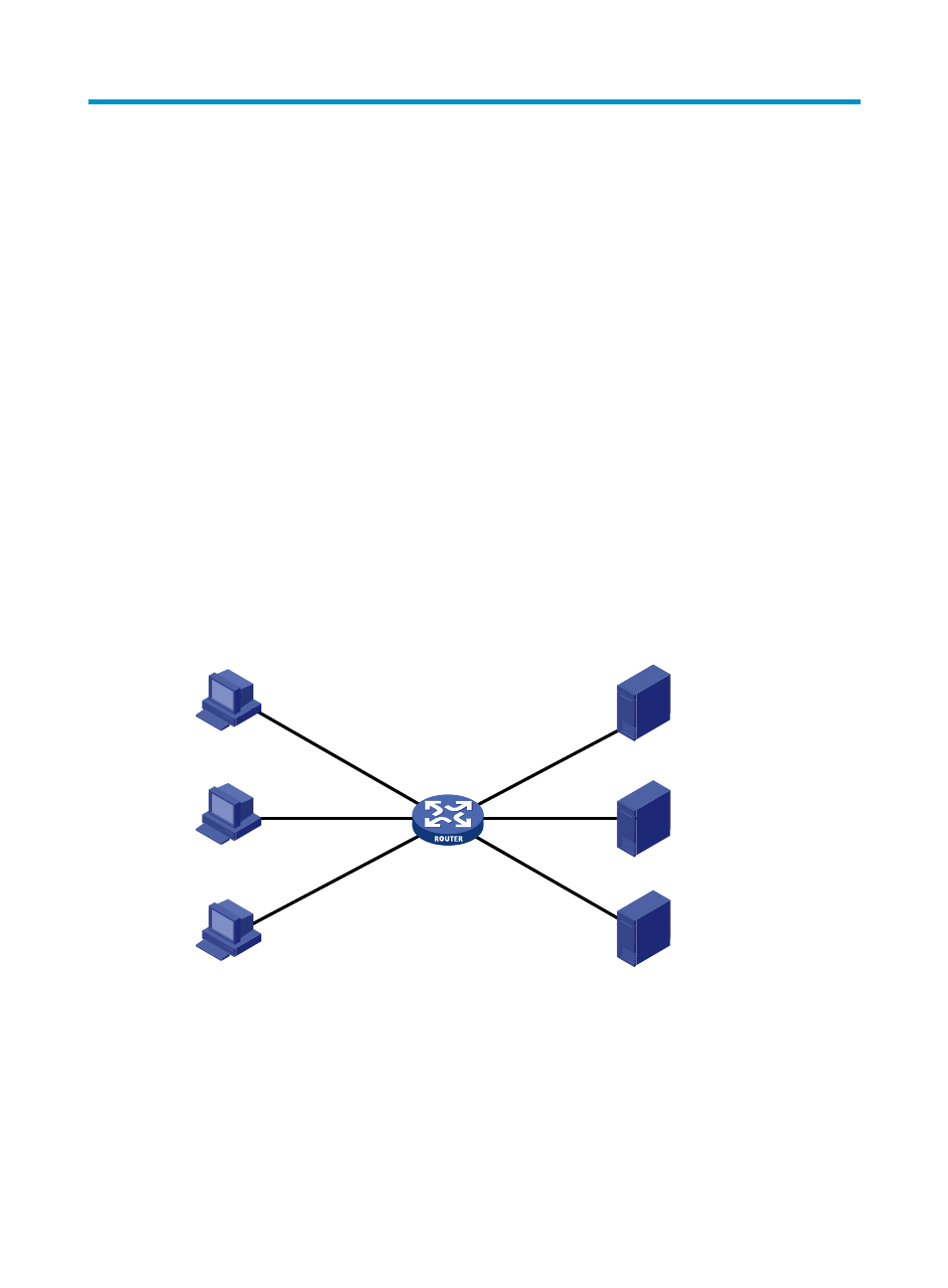Configuring portal authentication, Introduction to portal authentication – H3C Technologies H3C WX3000E Series Wireless Switches User Manual
Page 401

385
Configuring portal authentication
Introduction to portal authentication
Portal authentication helps control access to the Internet. It is also called "web authentication." A website
implementing portal authentication is called a portal website.
With portal authentication, an access device forces all users to log onto the portal website first. Every
user can access the free services provided on the portal website; but to access the Internet, a user must
pass portal authentication on the portal website.
A user can access a known portal website and enter username and password for authentication. This
authentication mode is called active authentication. There is also another authentication mode, forced
authentication, in which the access device forces a user trying to access the Internet through HTTP to log
on to a portal website for authentication.
The portal feature provides the flexibility for Internet service providers (ISPs) to manage services. A portal
website can, for example, present advertisements, and deliver community services and personalized
services. In this way, broadband network providers, equipment vendors, and content service providers
form an industrial ecological system.
A typical portal system comprises these basic components: authentication client, access device, portal
server, authentication/accounting server, and security policy server.
Figure 414 Portal system components
The components of a portal system interact in the following procedure:
1.
When an unauthenticated user enters a website address in the address bar of the browser to
access the Internet, an HTTP request is created and sent to the access device, which redirects the
HTTP request to the web authentication homepage of the portal server. For extended portal
functions, authentication clients must run the portal client software.
Authentication/accounting
server
Security policy server
Portal server
Authentication client
Access device
Authentication client
Authentication client